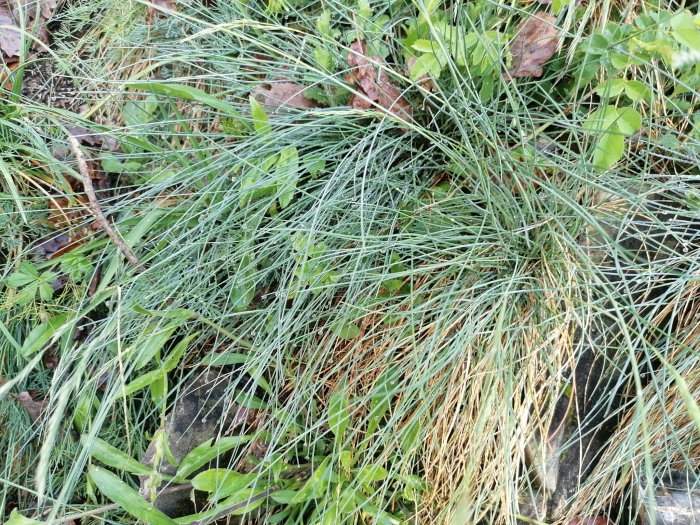Blue Fescue
(Festuca pallens)
Blue Fescue (Festuca pallens)
/
/

© Daniel Linzbauer
CC BY 4.0
Image By:
© Daniel Linzbauer
Recorded By:
Copyright:
CC BY 4.0
Copyright Notice:
Photo by: © Daniel Linzbauer | License Type: CC BY 4.0 | License URL: http://creativecommons.org/licenses/by/4.0/ | Uploader: gurucumi | Publisher: iNaturalist |

























Estimated Native Range
Summary
Festuca pallens, commonly known as blue fescue, is a perennial herbaceous plant, specifically a grass, native to temperate grasslands and rocky slopes in Europe. It is a clump-forming ornamental grass that typically grows to a height of 6-10 inches (15-25 cm) with a similar spread. Blue fescue is known for its fine, blue-gray foliage that forms a dense, tufted mound. It produces inconspicuous greenish flowers in early to midsummer, which mature into tan seed heads that are often left on the plant for winter interest.
Blue fescue is valued for its low maintenance, drought tolerance, and the striking blue color of its foliage, which adds contrast and interest to garden compositions. It is commonly used in rock gardens, as a border plant, or in mass plantings as ground cover. This grass prefers full sun to light shade and thrives in well-drained soils. Overwatering or heavy clay soils can lead to root rot, so proper drainage is essential. Blue fescue is relatively pest and disease-free but can suffer from rust in humid conditions. It is not known to be invasive and is often used in xeriscaping due to its low water requirements.CC BY-SA 4.0
Blue fescue is valued for its low maintenance, drought tolerance, and the striking blue color of its foliage, which adds contrast and interest to garden compositions. It is commonly used in rock gardens, as a border plant, or in mass plantings as ground cover. This grass prefers full sun to light shade and thrives in well-drained soils. Overwatering or heavy clay soils can lead to root rot, so proper drainage is essential. Blue fescue is relatively pest and disease-free but can suffer from rust in humid conditions. It is not known to be invasive and is often used in xeriscaping due to its low water requirements.CC BY-SA 4.0
Plant Description
- Plant Type: Grass
- Height: 1-2 feet
- Width: 0.5-1 feet
- Growth Rate: Moderate
- Flower Color: N/A
- Flowering Season: Summer
- Leaf Retention: Evergreen
Growth Requirements
- Sun: Full Sun, Part Shade
- Water: Medium, High
- Drainage: Medium, Fast
Common Uses
Deer Resistant, Drought Tolerant, Groundcover, Low Maintenance, Rabbit Resistant
Natural Habitat
Temperate grasslands and rocky slopes in Europe
Other Names
Common Names:
Scientific Names: , Festuca pallens, ? virens, Festuca arduenna, Festuca cinerea f. longiaristata, Festuca cinerea subsp. pallens, Festuca communis var. glauca, Festuca duriuscula f. fratrensis, Festuca duriuscula f. pubiculmis, Festuca duriuscula f. pubiculmis
GBIF Accepted Name: